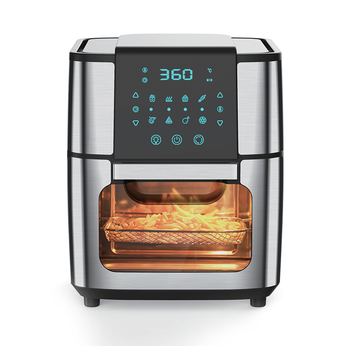Blending Speed: Blenders with vacuum cups tend to have a slightly slower blending speed compared to standard blenders, primarily due to the initial step of creating the vacuum seal. The vacuum process, which involves reducing the air pressure inside the blender jar, adds a brief moment before the actual blending begins. However, this additional step does not significantly hinder the overall process, as the blending itself is still efficient. The primary trade-off is that, while standard blenders often emphasize high motor speeds to achieve fast results, the vacuum blender utilizes a more methodical approach for smoother, finer results. For many users, the minor difference in speed is compensated by the superior texture and consistency provided by the vacuum technology.
Efficiency in Blending: A key advantage of the vacuum cup technology is its ability to enhance blending efficiency, especially with ingredients that are prone to oxidation, such as fruits and vegetables. In traditional blenders, the presence of air can lead to premature oxidation, which can degrade the flavor and nutritional value of the ingredients, especially in smoothies. With the vacuum function, the air inside the container is evacuated, reducing oxidation and preserving the nutrients and flavors. This not only improves the freshness of the blend but also results in a smoother and more even mixture, as the lack of air bubbles allows the ingredients to blend uniformly. As a result, a vacuum blender provides more consistent, high-quality blends with less effort, especially for delicate ingredients.
Ingredient Breakdown: The vacuum effect can also significantly improve the efficiency with which the blender breaks down tough, fibrous, or dense ingredients. For example, ingredients like leafy greens, nuts, and seeds are often difficult to blend smoothly in standard blenders, especially if they are fibrous. The vacuum function creates a more efficient blending environment by reducing air resistance, which allows the blades to better cut through tough or dense items, resulting in smoother textures. In contrast, standard blenders, while capable of high speeds, may struggle with these ingredients, requiring additional blending time or multiple cycles to achieve an even consistency.
Smoothness and Consistency: One of the standout benefits of a blender with a vacuum cup is its ability to produce smoother and more consistent textures. When blending with a vacuum, air is removed from the mixture, which prevents the formation of air bubbles that can create an uneven consistency. The absence of air helps the ingredients to blend more uniformly, resulting in a creamier, velvety texture that is often preferred for smoothies and shakes. On the other hand, standard blenders may leave behind lumps or separate liquids, especially with certain ingredients. Although powerful motors in traditional blenders can achieve smooth results, they may require longer blending times, and the final consistency might not be as silky as what a vacuum blender can provide in a single cycle.
Energy Efficiency: Blenders with vacuum cups tend to be more energy-efficient in producing high-quality blends compared to traditional high-speed blenders. While a traditional blender depends on maximum motor speed to achieve blending results, a vacuum blender operates at a more moderate speed while utilizing the vacuum process to aid in ingredient breakdown. The vacuum reduces air resistance, making the overall blending process more effective and energy-efficient. Since the motor doesn't have to work at full capacity to create smooth results, the vacuum blender can operate at lower power, which can be an advantage for users concerned about energy consumption or seeking a more eco-friendly solution.


 English
English 中文简体
中文简体 English
English 中文简体
中文简体












